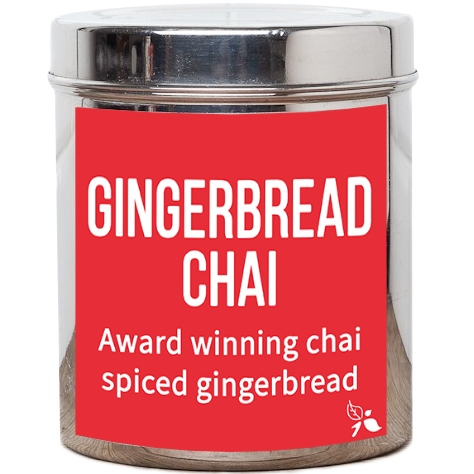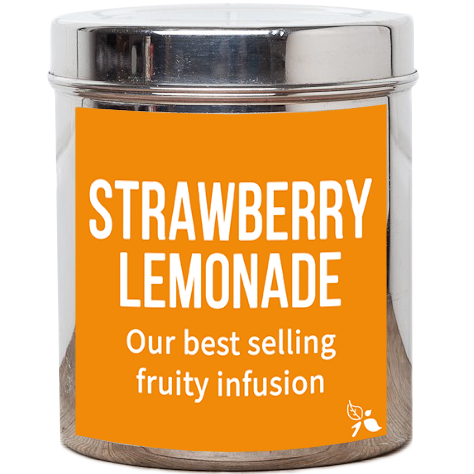Greetings Teabirds!
We have done a few posts about which of our teas are FODMAP diet friendly, but as more and more people are living this lifestlye, we thought we would update it a bit! So wether you are an existing fan, or new here and learning about FODMAP friendly teas for the first time… welcome! This is a safe sipping space!
Our original post was written FODMAP research was in its infancy, and since then there have been many updates and changes as the knowledge of this food theory evolves and grows, which we wanted to reflect in our recommendations to you, as the number of Bird & Blend teas has grown and changed too. We would always encourage you to seek your own medical advice before trailing any new restrictive eating or drinking habits, but if the low FODMAP ideology works for you and your symptoms, then please keep reading to find out more.
WHAT IS FODMAP DIETS?
For anyone reading this who hasn’t started the low FODMAP lifestyle yet or doesn’t know much about it, the acronym FODMAP actually stands for ‘Fermentable, Oligo-saccharides, Di-saccharides, Mono-saccharides And Polyols.’ These FODMAP groups are more commonly known as:
Fructans/galactans (often found in wheat/rye/onions/garlic/legumes/lentils)
Lactose (found in milk products)
Fructose (found in certain fruits/honey)
Polyols (found in certain fruits/vegetables/artificial sweeteners)
All of these are essentially short-chain carbohydrates that are rapidly fermented and thus often poorly absorbed by nearly everyone, and the whole idea of the low FODMAP diet is to temporarily cut out certain ingredients from your regime which have high levels of these types of fermentable carbohydrates, and then reintroduce these ‘triggers’ one by one to test which your individual body can tolerate. So the results will be different for everyone as no two bodies are identical!
As knowing which of the foods you love are triggers can be pretty complicated, there are many amazing resources in books and online to help guide you through, including the colour-coded traffic light system developed by Monash University (which can be accessed via smartphone app), which we found very useful in aiding my research for this blog.
While you’re in the initial 4-8 week restriction period, there are many things which contain high levels of FODMAP which you need to avoid (considered RED), and other things which simply need to be enjoyed in moderation (classified as AMBER). GREEN items you can go nuts with, and consume without any restrictions. And of course, once you test each FODMAP individually for yourself, you can bring back in things that don’t irritate your body and build back up your variety of foods/beverages! So for your drinking pleasure, we have compiled a list of all our amazing Bird & Blend teas using the information available, to advise which colour each falls into on this FODMAP traffic light system to make it super easy for all you teabirds to sip without the stress! Click here.
A NOTE ON FODMAP AND TEAS
While tea is totally allowed on a low FODMAP diet (thank the lord!). There are still a few general rules or guidance to follow.
First of all, it should be noted that any caffeinated drink can cause IBS/digestive issues, and so if you know caffeine irritates your tummy, it’s best to avoid teas with caffeine altogether, or stick to a maximum of 3 per day. Luckily, Bird & Blend offers a huge range of blends which are naturally caffeine free, so there’s plenty of alternatives!
Thankfully, most people are able to tolerate caffeine, and for the most part, ensuring your tea is FODMAP friendly is all down to how long you steep your cuppa! Almost all the teas that we have labelled as AMBER in our list, are that colour only to draw your attention to the portion and strength components. The same tea that is designated as AMBER if brewed strong and in a large mug, would actually be considered GREEN on the traffic light system as long as you brew it more on the weak side, and go for a cup (rather than a mug). So don’t be a mug(!), brew it the FODMAP way, and your favourite teas become GREEN again!
There are however some types of tea or specific ingredients that are to be avoided entirely, regardless of whether or not they are caffeine free, which we have designated as RED. These include: Chamomile, Dandelion, Fennel, Chicory Root, All Oolong teas, and Powdered Chai to name a few key ones. Some more obscure tea types like Pu-Urh for example, have not been tested for FODMAPS yet, and as such should be treated as RED until more research is done on their digestive effects. Other tea blends include ingredients known for being high in FODMAPS like apple, pineapple, mango etc, which are best to avoid; however it should be noted that unlike eating such things, when consuming them in tea you are only absorbing a trace amount of that ingredient’s essence, and so unless you are being very strict, feel free to take our colour coding with a pinch of salt, and do what feels right for your body and your soul, if that particular tea brings you unquantifiable happiness!
The whole idea of following a low FODMAP diet is to listen to your body, hear what it’s telling you, and go with that. So we hope this blog post takes the stress out of choosing FODMAP friendly cuppas, and helps you along your journey to a happy tummy, body and mind, as after all: “tea is a drink that relieves thirst and dissipates sorrow”
P.S. A NOTE ON MILK
Whether or not you add milk to your tea makes a difference, as chai brewed in milk is a FODMAP no-no, whereas brewing chai in water is completely good-to-go! And the kind of milk matters too, generally speaking, cow’s milk, lactose free, goat, almond, oat, coconut, and macadamia are all considered GREEN as long as it’s just a splash or small portion in your cuppa! The only milk to avoid is soy or soya milk, but some unsweetened varieties are ok if they are in very small amounts, so choose the milk or milk that’s right for you!












5 comments
Teas I can drink on the Fodmap diet
I am an IBS -D female who has been consulting Low Food diet for at least 3 years!
I have done well in : restricting diet but concerned I know my Nutrition has depleted and my Weight keeps slowly down
I know I have to learn better eating habits and regain some weight in a Healthy Manner
How do I find the LowFood May Color Coding…..Thank You
MannerPs I am a 75.5 active Senior
Hi Pam & Cas! Thank you so much for your feedback on this Blog Post! We have added a traffic light coded spreadsheet to this now so I really hope you find it helpful!
Happy Sipping!
Vic @ B&B
I came here from a Google ad, looking for low fodmap herbal teas. Like Pam, the other commenter, I was looking for the colour coded list of teas, which would be really helpful! I don’t feel confident about buying a tea for which there isn’t a fodmap rating. Thanks.
Your article says there is a color coded list of low to high FODMAP teas and I’ve seen it before on your site but can’t seem to find it now. Can you repost it? Thank you.